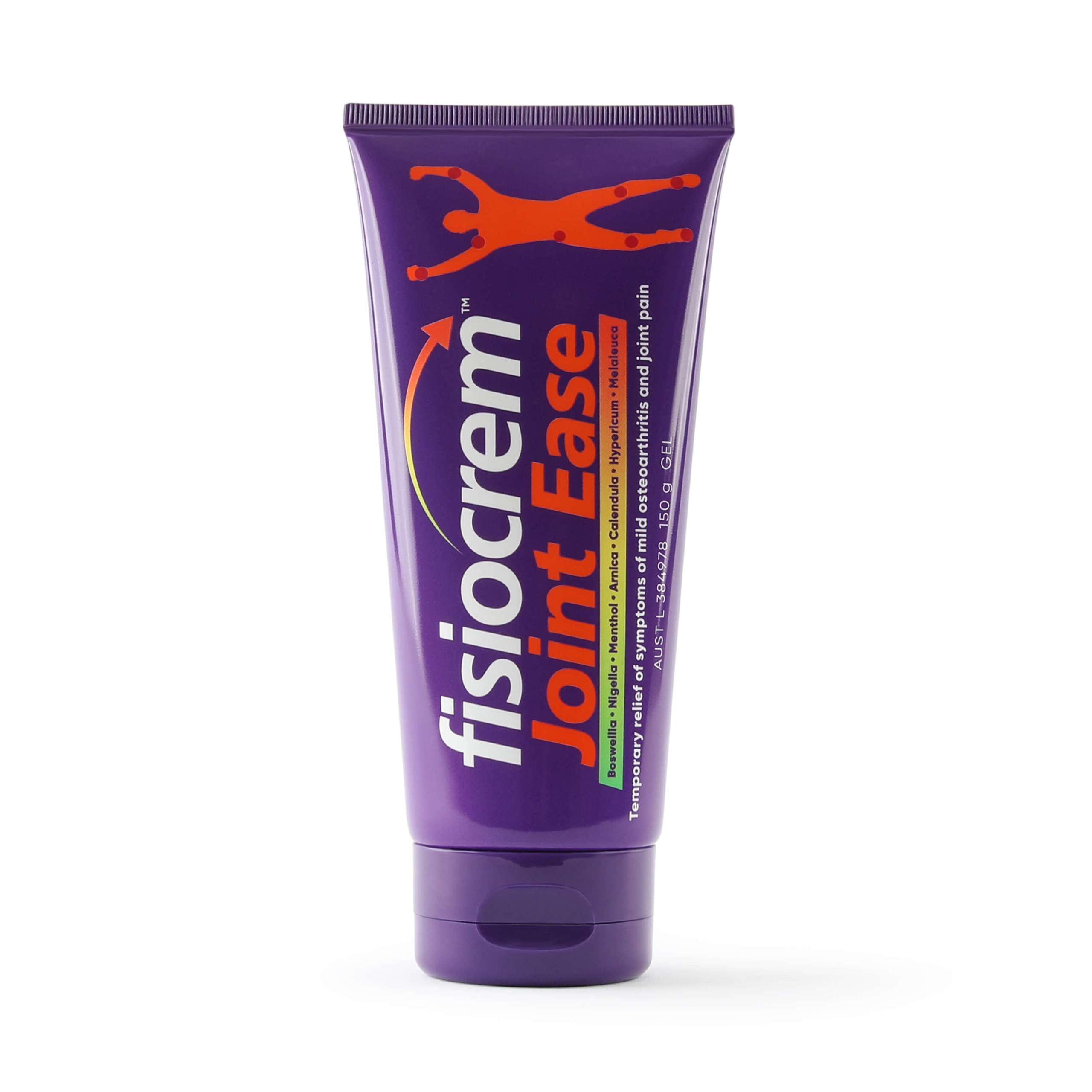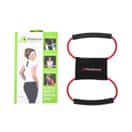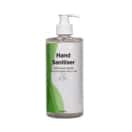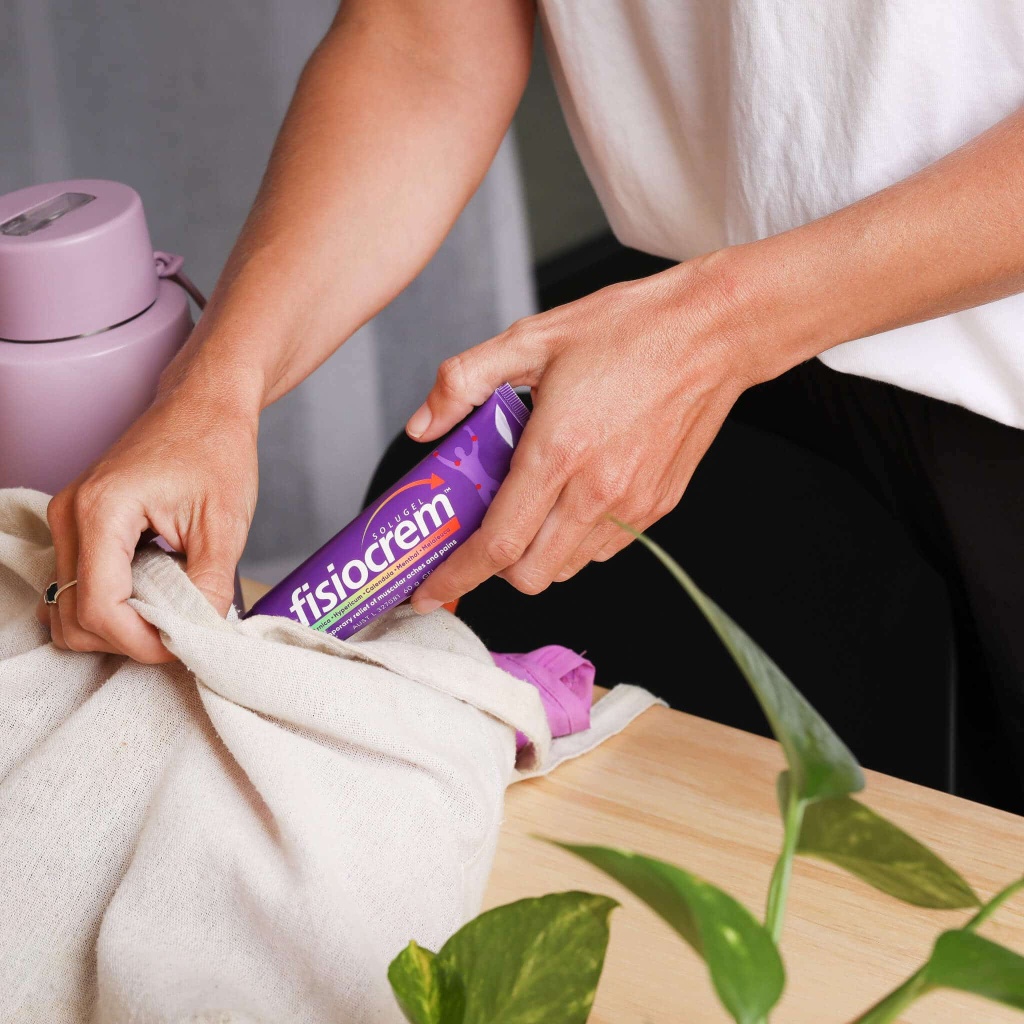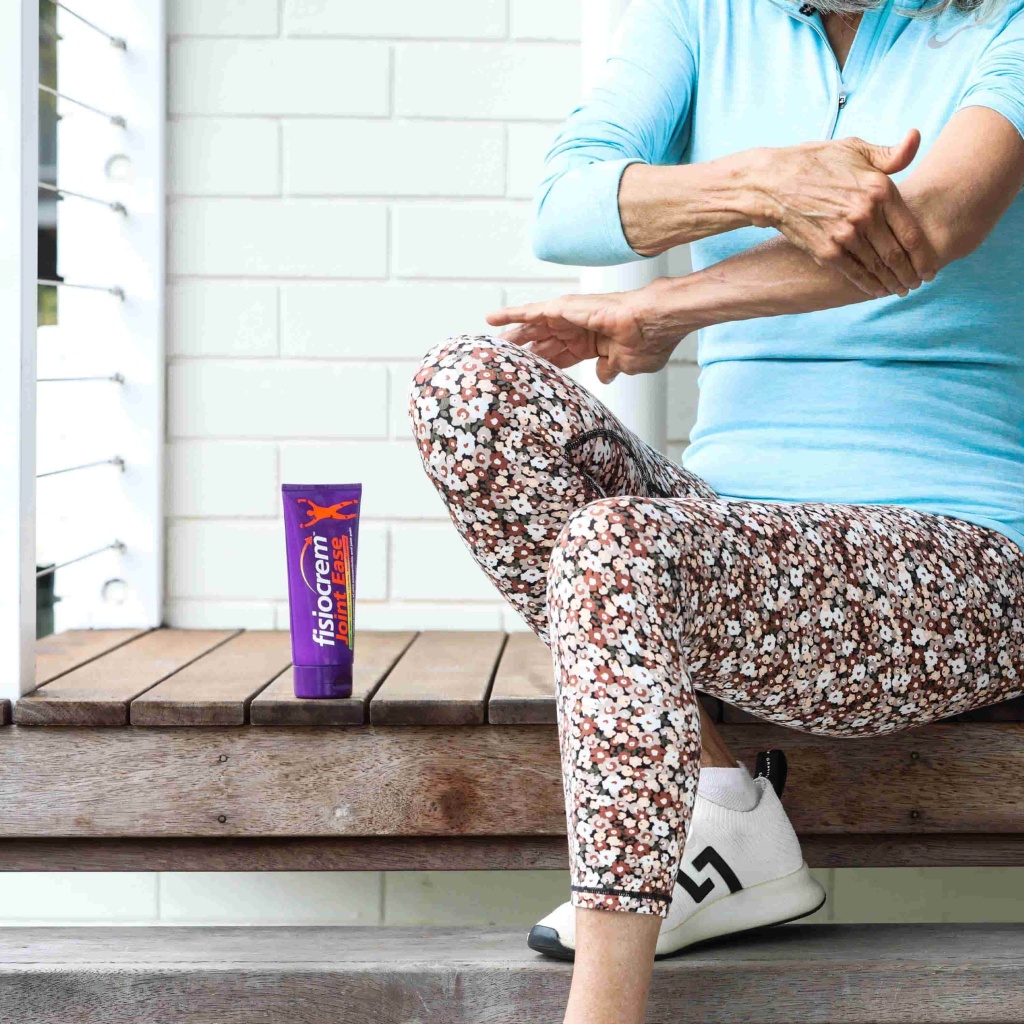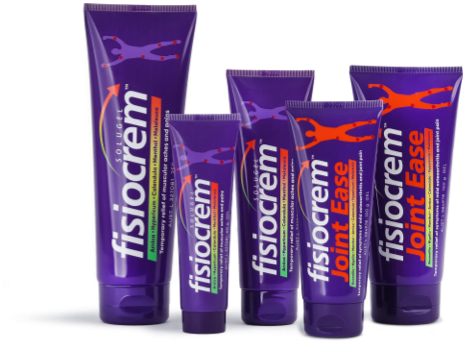Inflammation is one of the body’s first biological responses within the immune system (Zhu et al., 2017). The body aims to repair tissue associated with infection, injury or irritation (Schmid-Schönbein, 2006). Some common causes of inflammation include obesity, stress, injury and bacteria within the body (Lieberthal et al., 2015)(Cristofori et al., 2021)(Liu et al., 2017).
Inflammation can be a symptom of a more serious condition or disease, like mild arthritis and mild osteoarthritis (OA)(Lieberthal et al., 2015). It can lead to pain, sleeping issues, fatigue, and mood alterations that can drastically affect one’s lifestyle (Dantzer et al., 2008).
Luckily, there are some factors we can change to reduce and manage inflammation. These include what we eat, how much we exercise, not smoking, and drinking less alcohol (Kantoret al., 2013). Other good ways to manage inflammation include oral and topical anti-inflammatories. These can help reduce inflammation and keep you moving comfortably.
Below are some helpful tips and guidance to help you reduce and manage inflammation in the body so you can keep moving.
Anti-Inflammatory Diet: What To Eat (and Avoid)
Nutrition and dietary patterns can influence the body’s inflammatory response (Galland, 2010). Therefore, a diet of high-antioxidant foods and drinks can help combat inflammation (Lu et al., 2015). Just as certain foods can help reduce inflammation, certain foods can also increase it.
Below is a list of anti-inflammatory foods that fight inflammation.
- Fish: Salmon & tuna (Triggs et al., 2010)
- Garlic & ginger (Parvez et al., 2019)
- Nuts: Almonds & walnuts (Parvez et al., 2019) (Rajaram et al., 2023)
- Leafy greens: Spinach & kale (Randhawa et al., 2015)
- Grains: Barley and wheat (Parvez et al., 2019)
- Fruits: Blueberries, strawberries, cherries, grapes (Joseph et al., 2014) (Parvez et al., 2019)
- Vegetables: Potatoes, carrots, and red peppers (Reddivari et al., 2019) (Parvez et al., 2019)
Certain processed and refined foods can contribute to and worsen inflammation, these include:
- Salt (Parvez et al., 2019) (Myles, 2014)
- Gluten (Myles, 2014)
- Sugar (Parvez et al., 2019): Soft drinks and desserts
- Saturated fat, trans fat, omega 6 fatty acids (Parvez et al., 2019): Beef and fried foods
- Alcohol (Parvez et al., 2019)
Having a balanced diet can help reduce and relieve inflammation and help support a healthy and active lifestyle. Just remember everything in moderation.
Movement & Recovery Around Inflammation
Exercise can both cause and reduce inflammation (Woods et al., 2011). However regular exercise has far more health benefits than a sedentary lifestyle that can lead to adverse health outcomes, such as obesity (Wanigatunga et al., 2022) (Febbraio, 2007).
Exercise can cause muscle and connective tissue damage, typically when exercise is done at high intensities for a prolonged duration (Woods et al., 2011). This is typically referred to as delayed onset muscle soreness (DOMS). This temporary discomfort occurs as the body adapts to the new overload stress or new level of activity. Eventually leading to increased strength within the muscles.
Regular cardiovascular exercise training can help reduce and moderate inflammation. Exercise activity such as brisk walking or low-impact activities, can help improve circulation and reduce stiffness (Woods et al., 2011).
Low-impact exercises can include:
- Swimming – Reduces pressure on the joints
- Yoga or stretching – Helps to maintain flexibility and mobility.
- Inadequate sleep can also lead to increased inflammation.
Therefore it is important to maintain a good sleep duration and ensure you have a quality sleep through good sleeping patterns. This can help reduce inflammation and allow the body time to recover (Simpson et al., 2008).
Anti-Inflammatory Creams/Gels For Pain: What You Need to Know
Topical anti-inflammatory gels and creams have many advantages over oral anti-inflammatory tablets, with reduced incidence of systematic side effects (Stanos et al., 2015)(Argoff et al., 2013). Topical creams/gels are effective in the management of inflammation and pain, associated with conditions like mild osteoarthritis (Stanos et al., 2015).
Topical pain relief creams/gels like fisiocrem Solugel & fisiocrem Joint Ease can help relieve inflammation and soreness. Both fisiocrem products can be used in conjunction with oral anti-inflammatories, unlike other topical gels.
fisiocrem Solugel - Muscle pain & inflammation
fisiocrem Solugel is a clinically tested pain relief gel for muscle pain and soft tissue injuries (Ramon et al., 2022). In a randomised, double-blind, placebo-controlled, clinical trial fisiocrem Solugel was shown to significantly reduce pain and improve mobility within minutes of application; used twice daily, it continued to improve musculoskeletal pain and mobility over 14 days, showing the benefit of both immediate and longer-term pain relief (Ramon et al., 2022)
fisiocrem Joint Ease - Mild Joint pain & inflammation
fisiocrem Joint Ease is formulated to help relieve symptoms associated with mild arthritis. In particular, it helps reduce inflammation and stiffness within the joint area improving joint mobility.
FAQ's - All about inflammation
Do’s: Eat a healthy balanced diet rich with anti-oxidant foods. Develop regular exercise habits and ensure adequate sleeping patterns. Utilise topical pain relief products to manage inflammation and swelling.
Don’ts: Eat a diet high in sugar, fats and salt. Operate on minimal sleep and consume large sums of alcohol.
A traditional Mediterranean diet has a high ratio of monounsaturated (MUFA) to saturated (SFA) fats and polyunsaturated fatty acids (PUFAs). This diet has an abundance of fruits, vegetables, legumes, and grains, that have anti-inflammatory effects (Galland, 2010).
A traditional Mediterranean diet has anti-inflammatory properties. This diet places emphasis on fruits, vegetables, and olive oil consumption, with limited meat consumption (Tsigalou et al., 2020).
An anti-inflammatory diet is rich in omega-3s and polyphenols. An important aspect of an anti-inflammatory diet is the reduced intake of omega-6 fatty acids (Sears et al., 2015).
An anti-inflammatory cream like fisiocrem Solugel and fisiocrem Joint Ease can reduce swelling and pain. They help alleviate discomfort and reduce symptoms from sprains, strains, sports injuries and soft tissue trauma.
A topical anti-inflammatory cream like fisiocrem Solugel and fisiocrem Joint Ease can help reduce swelling and relieve pain. Explore the fisiocrem product range.
In conclusion making mindful changes to diet, exercise habits, and lifestyle can help reduce inflammation and improve movement and health outcomes. Incorporating topical pain relief creams/gels into your routine can assist with pain management and inflammation.
Discover how fisiocrem can support your recovery.
References
1) Argoff, C. E. (2013). Topical Analgesics in the Management of Acute and Chronic Pain. Mayo Clinic Proceedings, 88(2), 195–205.
2) Cristofori, F., Nadia Dargenio, V., Dargenio, C., Leonardo Miniello, V., Barone, M., Francavilla, R. (2021). Anti-Inflammatory and Immunomodulatory Effects of Probiotics in Gut Inflammation: A Door to the Body. Intestinal Dysbiosis in Inflammatory Diseases, 12.
3) Dantzer, R., Capuron, L., Irwin, M., Miller, A., Ollat, H., Perry, V., Rousey, S., Yirmiya, R. (2008). Identification and treatment of symptoms associated with inflammation in medically ill patients, 33-22.
4) Febbraio, M. A. (2007). Exercise and inflammation. Journal of Applied Physiology, 103(1), 376–377.
5) Galland, L. (2010). Diet and Inflammation. Nutrition in Clinical Practice, 25(6), 634–640.
6) Hess, J. M., Stephensen, C. B., Kratz, M., & Bolling, B. W. (2021). Exploring the Links between Diet and Inflammation: Dairy Foods as Case Studies. Advances in Nutrition, 12.
7) Joseph, S. V., Edirisinghe, I., & Burton-Freeman, B. M. (2014). Berries: Anti-inflammatory Effects in Humans. Journal of Agricultural and Food Chemistry, 62(18), 3886–3903.
8) Kantor, E. D., Lampe, J. W., Kratz, M., & White, E. (2013). Lifestyle Factors and Inflammation: Associations by Body Mass Index.
9) Lieberthal, J., Sambamurthy, N., Scanzello, R. (2015). Retrieved from: https://www.sciencedirect.com/science/article/pii/S106345841501300X
10) Lieberthal, J., Sambamurthy, N., Scanzello, R. (2015). Retrieved from: https://www.sciencedirect.com/science/article/pii/S106345841501300X
11) Liu, y., Wang, Y., Jiang, C. (2017). Inflammation: The Common Pathway of Stress-Related Diseases. Brain Health and Clinical Neuroscience, 11.
12) Lu, C., Yen, C. (2015) Antioxidative and anti-inflammatory activity of functional foods, 2.
13) Metsios, G. S., Moe, R. H., & Kitas, G. D. (2020). Exercise and inflammation. Best Practice & Research Clinical Rheumatology, 34(2), 101504.
14) Myles, I. A. (2014). Fast food fever: reviewing the impacts of the Western diet on immunity. Nutrition Journal, 13(1).
15) Parvez, M., Akanda, K. (2019). Foods and Arthritis: An Overview, 3-22
16) Ramon et al Ortho & Rheum Open Access J 20(1): OROAJ.MS.ID.556028 (2022) This study was funded by fisiocrem.
17) Randhawa, M. A., Khan, A. A., Javed, M. S., & Sajid, M. W. (2015). Chapter 18 – Green Leafy Vegetables: A Health Promoting Source. 205-220.
18) Rajaram, S., Damasceno, N. R. T., Braga, R. A. M., Martinez, R., Kris-Etherton, P., & Sala-Vila, A. (2023). Effect of Nuts on Markers of Inflammation and Oxidative Stress: A Narrative Review. 15(5), 1099.
19) Reddivari, L., Wang, T., Wu, B., & Li, S. (2019). Potato: an Anti-Inflammatory Food. American Journal of Potato Research, 96(2), 164–169.
20) Schmid-Schönbein, G. (2006). Analysis of inflammation. Annual Review of Biomedical Engineering, 8(1), 93–151.
21) Sears, B. (2015). Anti-inflammatory Diets. Journal of the American College of Nutrition, 34(sup1), 14–21.
22) Simpson, N., & Dinges, D. F. (2008). Sleep and Inflammation. Nutrition Reviews, 65(3), S244–S252.
23) Stanos, S. P., & Galluzzi, K. E. (2015). Topical Therapies in the Management of Chronic Pain. Postgraduate Medicine, 125(1), 25–33.
24) Triggs, C. M., Munday, K., Hu, R., Fraser, A. G., Gearry, R. B., Barclay, M. L., & Ferguson, L. R. (2010). Dietary factors in chronic inflammation: Food tolerances and intolerances of a New Zealand Caucasian Crohn’s disease population. 690(1), 123–138.
25) Tsigalou, C., Konstantinidis, T., Paraschaki, A., Stavropoulou, E., Voidarou, C., & Bezirtzoglou, E. (2020). Mediterranean Diet as a Tool to Combat Inflammation and Chronic Diseases. An Overview. Biomedicines, 8(7), 201.
26) Wanigatunga, A. A., Chiu, V., Cai, Y., Urbanek, J. K., Mitchell, C. M., Miller, E. R., Christenson, R. H., Rebuck, H., Michos, E. D., Juraschek, S. P., Walston, J., Xue, Q.-L., Bandeen-Roche, K., Appel, L. J., & Schrack, J. A. (2022). Patterns of Daily Physical Movement, Chronic Inflammation, and Frailty Incidence, 281-288.
27) Woods, J. A., Wilund, K. R., Martin, S. A., & Kistler, B. M. (2011). Exercise, Inflammation and Aging. Aging and Disease, 3(1), 130.
28) Zhu, F., Du, B., & Xu, B. (2017). Anti-inflammatory effects of phytochemicals from fruits, vegetables, and food legumes: A review. Critical Reviews in Food Science and Nutrition, 58(8), 1260–1270.


